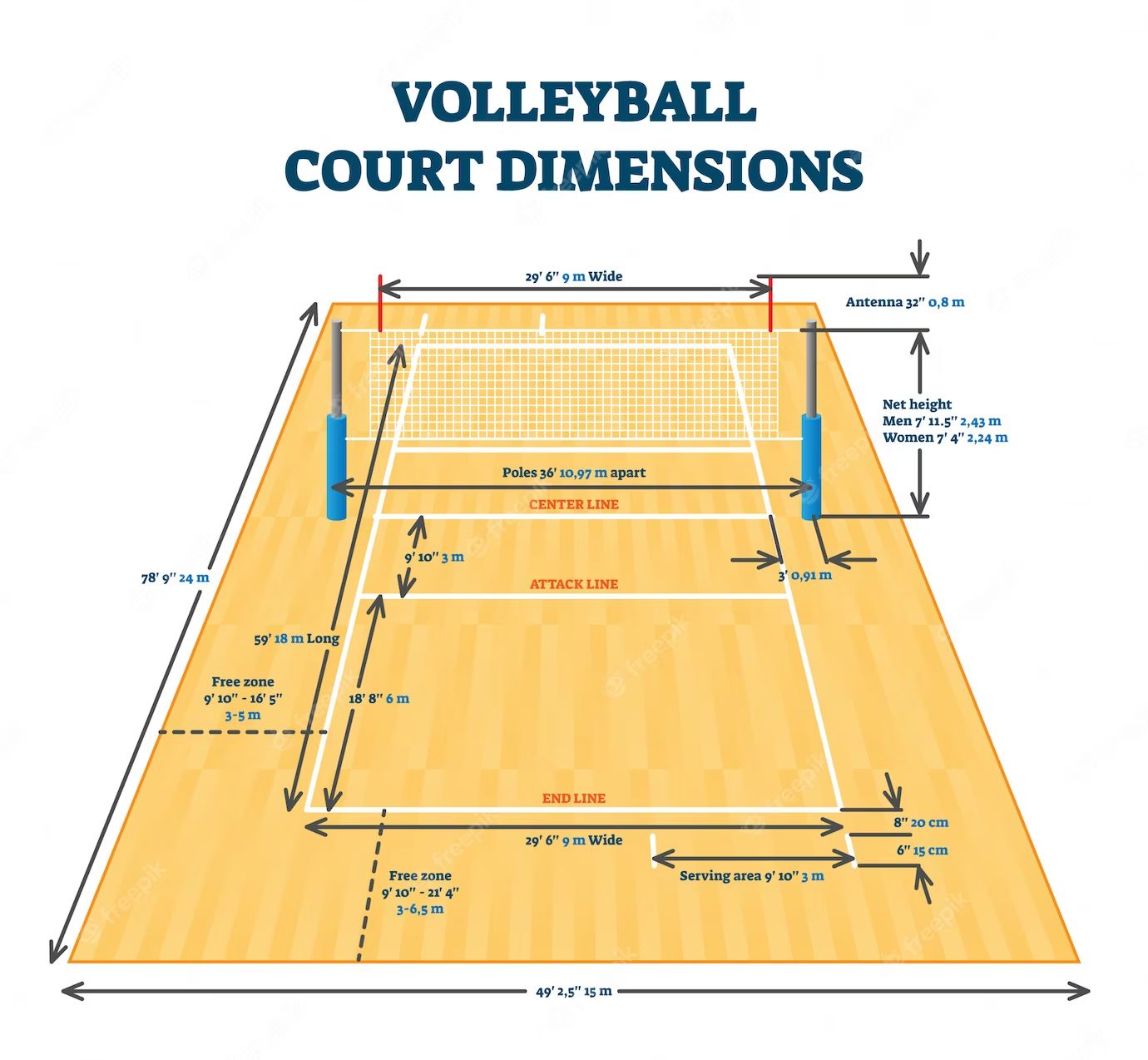The basics of volleyball
A volleyball game consists of two teams of six players each, separated by a net. The six volleyball court positions are setter, middle blocker, outside hitter, opposite hitter and libero.
One team will serve and then the two teams will rally, hit the ball back and forth over the net until a fault occurs. There is a maximum of three hits per side.
The objective is to score points by sending the ball over the net, grounding it into the opponent’s court or forcing them to fail the return.
Volleyball matches are made up of sets, typically three or five sets.
Three-set matches are two sets to 25 points and a third set to 15 points. Each set must be won by two points. The first team to win two sets is the winner of the match.
Five-set matches are four sets to 25 points and a fifth set to 15 points. The team must win by two points unless tournament rules dictate otherwise. The first team to win three sets is the winner.
The fundamental rules of volleyball:
- Only 6 players on the court at any given time, 3 front and 3 back and must be in specific rotations for each serve.
- Points are made on every serve for the winning team of the rally (rally-point or american scoring).
- Players may not hit the ball twice in succession (a block is not considered a hit).
- The ball may be played off the net during a volley and on a serve, as long as it is with in the sides and doesn't touch them.
- A ball hitting a court line is considered in.
- A ball is out if it hits an antennae, the floor completely outside the court, any of the net or cables outside the antennae, the referee stand or pole, or the ceiling above a non-playable area.
- It is legal to contact the ball with any part of a player’s body.
- It is illegal to catch, hold or throw the ball.
- A player cannot block or attack a serve from on or inside the 10-foot line.
- After the serve, players may switch positions but back court players can't attack or defend at the net.
General violations:
Committing any of these volleyball rule violations results in a point for the opponent.
- Stepping on or across the service line when serving while making contact with the ball.
- Failure to serve the ball over the net successfully.
- Ball-handling errors and contacting the ball illegally (double touching, lifting, carrying, throwing, etc.)
- Touching the net with any part of the body while the ball is in play at the net.
- Blocking a ball coming from the opponent’s court and contacting the ball when reaching over the net if your opponent has not used 3 contacts AND has a player there to make a play on the ball.
- Attacking a ball coming from the opponent’s court and contacting the ball when reaching over the net when the ball has not yet broken the vertical plane of the net.
- Crossing the court centerline with any part of your body, with the exception of a hand or foot. It is only considered a violation if the entire hand or entire foot crosses the court centerline.
- Serving out of rotation or out of order.
- Back row player blocking (deflecting a ball coming from the opponent) when, at the moment of contact, the back row player is near the net and has part of their body above the top of the net. This is an illegal block.
- Back row player attacking a ball inside the front zone (the area inside the 3M/10-foot line) when, at the moment of contact, the ball is completely above the net. This is an illegal attack. If the back row player leaves the ground from behind the 3M line and hits the ball before landing they can cross the 3M line in the air.
Rules - Links
FIVB Official Volleyball Rules
